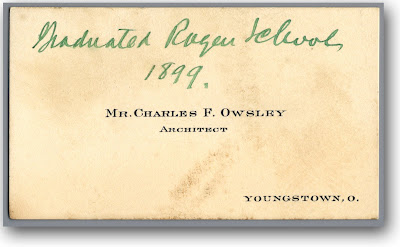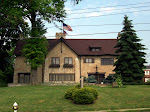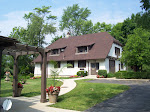 In late August, the Youngstown Board of Education approved a resolution allowing the School District to donate the Rayen High School time capsule from 1921 to the Historical Society. This time capsule was placed in the cornerstone of the new building at Benita Avenue when it was dedicated on June 7, 1921, and it was recovered when the building was recently demolished.
In late August, the Youngstown Board of Education approved a resolution allowing the School District to donate the Rayen High School time capsule from 1921 to the Historical Society. This time capsule was placed in the cornerstone of the new building at Benita Avenue when it was dedicated on June 7, 1921, and it was recovered when the building was recently demolished. The capsule consisted of a sealed copper container roughly the size and shape of a shoe box, which was manufactured by the John R. Squire Company, 355 East Wood Street, in downtown. In it was a 1920 silver quarter dollar and numerous paper documents from 1921 including a list of school board members, lists of faculty and administration for Rayen High School, lists of the members of each graduating class from 1914 to 1921, copies of the student magazine The Rayen Record, and recent editions of the Youngstown Vindicator and the Youngstown Telegram—the two daily newspapers at the time.
The capsule consisted of a sealed copper container roughly the size and shape of a shoe box, which was manufactured by the John R. Squire Company, 355 East Wood Street, in downtown. In it was a 1920 silver quarter dollar and numerous paper documents from 1921 including a list of school board members, lists of faculty and administration for Rayen High School, lists of the members of each graduating class from 1914 to 1921, copies of the student magazine The Rayen Record, and recent editions of the Youngstown Vindicator and the Youngstown Telegram—the two daily newspapers at the time.Another interesting piece in the time capsule is Charles F. Owsley’s business card. Mr. Owsley was the architect for the new Rayen School, and he wrote on this particular card that he was an 1899 Rayen School graduate.
Most of these materials, along with the time capsule container, are now on exhibit in the new aquisitions area of the Arms Family Museum.
 The Vindicator published a nice story on the time capsule and it's significance.
The Vindicator published a nice story on the time capsule and it's significance.Read it here.
Youngstown’s First High School
When William Rayen died in 1854, his will set aside $31,390 for a public academy to be known as “The Rayen School.” P. Ross Berry, an African American brick and stone mason, built the four-room brick building at the corner of Wick and Wood in the Greek Revival style of architecture. It opened its doors in 1866 with forty students and a predominantly female faculty. It graduated Youngstown’s first high school students several years later. The Rayen School was the city’s only high school until 1911.








